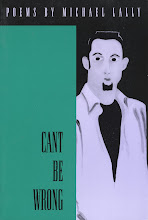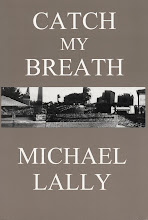
There’s no explaining death. It sucks no matter when it comes to someone we care about. I cared about George.
George Schneeman lived the life of an artist in a way few do anymore. He painted, made collages, drew, used watercolors, sculpted, made plates and vases (as frisky and indelible as any antique Greek pottery, only more so), did frescoes even, pretty much anything an artist could do with actual materials, he did. And it was always engaging, entertaining, and often enlightening in ways the work didn’t project so that it was always a surprise.
I love his work. And I loved him. I doubt in any way he could ever understand, or even knew. He’s best known in the downtown St. Mark’s poetry scene of the past almost half century as an artist who lent his skills to the covers of many books of poetry and little magazines, and as the best friend of the poet (and godfather in many ways of that scene) Ted Berrigan.
Ted was someone who had a lot of friends, many, I suspect, who thought they were his “best” (there were times when even I felt that way). But from my observations and from Ted’s comments, it was George Ted most often considered his best friend.
When Ted died, George led the parade around the Lower East Side commemorating Ted’s life, carrying a big banner that was actually a painting George did of Ted. At least that’s the way I heard it; I was on the West Coast at the time and couldn’t make the celebration.
I know George missed Ted. As he must have missed his son Elio terribly, a wonderful poet who died too young.
I never knew what was going through Geroge’s mind when I encountered him. I always felt like my exuberance and sometimes tactless overexcited response to most of life amused him.
But after living out in the L.A. area for almost twenty years and then returning to the East, at my first event, a book party if I remember correctly, I encountered a lot of people from the 1960s and ‘70s St. Mark’s poetry scene and my emotions reacted to them before my mind even registered who they were.
It was almost childish I suppose, but some people I had no feelings for at all, and at least one there was a slight feeling of revulsion for. But in several cases, George among them, my heart just overflowed with affection the minute I spied them. I was just plain happy to see them, no matter how they felt about seeing me after so many years.
Partly that affection was a result of George’s art. It had the kind of infectious charm that Joe Brainard’s art also has, where if it gets to you, it can do whatever it wants, like a child you adore who can do no wrong.
Anything George created, I dug. I have his art all over my apartment, mostly stuff he gave me, or his youngest son Emil gave me, or I bought from his last show of collages that was one of the best shows I’ve ever seen.
George didn’t have regular gallery shows. As far as I know he didn’t have a regular gallery (though not long ago Tibor de Nagy had a small show of collages he did with poets—starting from the 1960s to more recent ones). He didn’t care about that stuff (another reason I dug him so much, I felt a kinship to that kind of approach, the do-your-work-the-way-you-want and get it to people you care about and don’t bother with all the schmoozing and “networking” and compromise and whatever else you have to do to forge ties with those with power in the art or poetry or movie or any other world).
George created a life that was perfect for an artist. In the old days his day job was teaching English to immigrants. But he had a rent-control apartment on St. Marks Place, right in the heart of the action that made the 1960s the 1960s—and ditto for the following decades. Even now, the street reflects the times in ways no other part of the city does.
He also had a place in the Italian countryside, where he could go with his beloved and beautiful wife Katie, for some R&R from city life. He loved Italy. A lot of his art reflected that love. One of his recent shows—at CUE, if I remember correctly—was of landscapes he’d done of the Tuscan was it? countryside. Beautifully understated reflections of the peace those vistas obviously gave him.
George was also famous among his friends for the calendar he made each year, it was always a print of one of his latest works of art with the twelve months hand lettered and below each a handmade box with the dates of each month delineated. Complete works of art, each and every one of them (I had last year’s collage one framed, and this year’s has a reproduction of one of his Italian landscapes).
George was a beautiful man as well. Handsome, yes, but delicate, a term I doubt he’d want used, but nonetheless, his good looks were delicate, not feminine, just delicate in the best sense of that word (the accompanying photo doesn’t illustrate this point that well, so if you never saw him in person, you’ll have to take my word for it).
I liked his smile and his playfulness. I always felt he was teasing me for my crazy life, changing day jobs and living quarters and partners and even ways of approaching my own art (poetry and other writing, etc.) so often most people gave up trying to make sense of it. Like I said, my approach to things, including life, seemed to amuse him.
But he was earnest when he would explain his own set up, how he could get by on little enough to make it possible for him to devote most of his time to his art without interference from agents or gallery owners or critics or anyone else who he didn’t care about.
And he was equally earnest when he would explain a certain technique he was using to create that art (his studio was in his apartment, there was no separation between his art and the rest of his life as far as I could see).
My guess is his work is going to become more and more valuable now that he’s gone. I suspect some enterprising gallery (hopefully one as committed as Tibor de Nagy) will curate a show that will demonstrate for anyone who doesn’t already know, the breadth of George’s talent and the delight he obviously took in exercising it, a delight that is contagious when you’re standing in front of one of the results of one of the many approaches he took to creating art.
In the meantime, keep Katie and George’s surviving sons—Paul and Emil—and grandsons—Luke and Mark—in your thoughts and prayers as I will.
[The NY Times site put up an obit and slide show a few days after I wrote the above. Check it out.]
















6 comments:
Beautiful. Thank you. He was a great artist and kind man. There are a lot of us that were touched by him--we'll miss him.
How sweet to read about Ted's best friend and your relationship with him. Thanks.
suzanne g
Although I did not get to know my grandfathers brother very well, I do know that he meant a lot our family and will be sorely missed. My father and I got to go visit George and Katie last spring-- they had us over for dinner and spoke with my excitement for their upcoming trip to Italy. I feel truly blessed for that trip now.
-Lucy Schneeman
George was my second father when I moved to NYC age seventeen and first lived on his block--I always felt truly welcome in his apartment (which was usually filled with ongoing projects) and gladly so as part of the extended family of poets that stopped by all the time to give him inspiration--but none was more inspiring to him (or to me) than his wife and favorite subject Katie and to watch their love at work was to witness the real thing--a privilege and joy to behold--I was lucky to know him--and blessed to be his friend--Steven Hall
Michael how kind of you to just sit down and reflect for all of us and bring some of the beautiful facts of George's existence to light: he was a very good looking man and Katie has always been a beauty, especially her amazing warm smile. I'm privileged to say that I had a fortunate opportunity to attend some of the immortal poker games back in the old days. Not a poker player myself, instead the big benefit for me was learning about the drink Cynar, one of those Italian specialties that George was so informed about. Cynar is made of artichokes and, for most, is a learned taste. I want to take this opportunity to say a big thanks for Steve Clay for publishing George's work, for taking it seriously in the way he did and in the way so many others didn't. George's work existed mostly in that somewhat insular downtown community which is of course world-renowned however because of George's humility and sense of integrity and general non-competitive/non-aggressive world view it didn't get pushed out beyond the borders much. Those of us who knew it of course treasure those calendars and that pottery and were thrilled by those relatively few shows that took place. He'll be missed. He warmed so many of our hearts. He cared about those of us he knew. And Katie too. They are the rare people who welcome you into the fold of their family and never forget that you meant something to them whenever it was. The best of people and my good wishes and prayers to out to Katie and Paul and Emil, with much love.
Very moving, thanks for sharing. I didn't know the artist but feel very inspired by his work and life.
Post a Comment